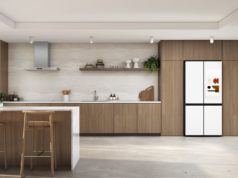Star Rating: 4 stars
The 5.5in Google Pixel XL is the company’s first own-brand phablet, the bigger brother of the 5in Pixel. It’s Google inside and out, but is it better than Samsung or Apple’s efforts?
The 5in Pixel is a good smartphone, but it’s not the most inspired design. The 5.5in Pixel XL is essentially the Pixel put in the photocopier and magnified.
Right on the Limit
It’s no thicker, though: the wedge-shaped phablet is 7.3mm at the bottom and 8.6mm thick at the top. It weighs another 25g at 168g and it is 6.2mm wider and 10.9mm taller. Compared to the competition, the Pixel XL is about in the middle. The Samsung Galaxy S7 Edge is 7.7mm thick and weighs 157g, while Apple’s iPhone 7 Plus is 7.3mm thick and weighs 188g.
But the biggest difference for all these 5.5in phablets is the width. The Pixel XL is 75.7mm wide, which is a little narrower than the 77.9mm iPhone 7 Plus but much wider than the 72.6mm S7 Edge. Width is the biggest determinator of how easy a phablet will be to use with one hand without special adaptations for one-handed use. Where the iPhone 7 Plus is too wide, the Pixel XL is right on the limit.
Its flat edges and relatively small bezels either side of the 5.5in screen make it manageable with a not abnormal handspan of 23cm. But I suggest if you’re interested in buying one, visit a store to see if it’s comfortable to hold for.
The Pixel XL is well built, has a good balance in the hand, but is a bit bland in terms of design, with the only flourish the glass panel that covers a third of the back. It makes it a little easier to grip, but splits opinion as to whether it’s attractive. It grew on me after a week.
The display is very good. A 5.5in quad HD AMOLED with a pixel density of 534 pixels per inch. It’s crisp, colourful and bright — bright enough to see in direct sunlight, in fact. It’s not quite as vibrant as Samsung’s Galaxy S displays, however, but it is more punchy than the LCDs on iPhones.
Specifications
* Screen: 5.5in quad HD AMOLED (534ppi)
* Processor: quad-core Qualcomm Snapdragon 821
* RAM: 4GB of RAM
* Storage: 32 or 128GB
* Operating system: Android 7.1 Nougat
* Camera: 12.3MP rear camera, 8MP front-facing camera
* Connectivity: LTE, Wi-Fi, NFC, Bluetooth 4.2, USB-C and GPS
* Dimensions: 154.7 x 75.7 x 7.3-8.6 mm
* Weight: 168g
* 26 hours or more between charges
The Pixel XL shares the same processor, RAM and storage as the Pixel, and performs just as well. It’s snappy, launching apps and switching between them without delay; capable of handling anything you might throw at it and is one of the first DayDream-ready smartphones.
The larger screen and increased pixel density do not seem to impact the performance of the device, or how hot it got under load. It ran cooler than most other modern high-end smartphones during general use, heating up slightly only when playing graphically intensive games such as Real Racing 3 and Asphalt 8.
One thing that is different is the Pixel XL’s battery life. Using the Pixel XL as my primary device, it lasted 26 hours between charges, managing three hours of app usage and browsing, hundreds of emails and push notifications, a couple of photos, five hours of music over Bluetooth headphones and quite a lot of Dan the Man during my one hour and 20-minute train commute to and from work. It means you’ll get through a day, a night out and the commute to work the next day, but you’ll have to charge it when you get there.
More conservative use and with the battery saving mode enabled below 20% charge will probably see most people at make it till they get home on the second day before needing a charge.
When it comes to charging the Pixel XL, zero to 100% takes about one hour 45 minutes. A half charge takes about 30 minutes, which makes it one of the faster charging smartphones.
Android 7.1 Nougat
The Pixel Xl runs the latest version of Android 7.1 Nougat, just like its smaller sibling. A rundown of the new features introduced with Android 7.0 Nougat is available separately.
Google also added a few new things within 7.1 Nougat, including launcher shortcuts, a new-look launcher, Google Assistant and a built-in night mode.
The Pixel XL’s larger screen, however, makes some features more useful. The ability to have two apps side-by-side on one screen, called multi-window, is one such example. For apps that support it, holding the overview button places one app above the other, or side-by-side in landscape orientation, with a slider in the middle to change the split. It’s particularly useful if you’re having a conversation over text and need to look at a map or similar, and is much more useable on the larger 5.5in screen than the 5in Pixel.
On the whole it is the most polished and together Android experience currently available and will benefit from prompt software updates direct from Google that are not blocked or delayed by network providers for at least two years. Some other Android devices from the likes of Samsung and LG will receive relatively prompt security updates, but Android version updates take months to a year from the point of which Google releases them.
Fingerprint Scanner
The fingerprint scanner on the back of the Pixel XL is the same as the Pixel: fast, accurate and can now be used to bring down the notification shade with a swipe on the pad — something other manufacturers including Huawei have been doing for a while.
The Pixel Imprint scanner is arguably the best in the business, but if you use your phone on a desk, you can’t activate it without picking it up, or falling back to your passcode or lock pattern.
Camera
On paper, the Pixel XL’s camera, like the Pixel, isn’t that much to write home about. It’s a 12.3-megapixel camera with a f/2.0 lens without optical image stabilization. The iPhone 7’s camera has 12-megapixel camera and an f/1.8 lens, while Samsung’s Galaxy S7 Edge has a 12-megapixel camera with an f/1.7 lens. The lower the f-number the faster the lens and, in theory, the more light it lets in.
But the Pixel has a software advantage, producing some of the best, most detailed and colorful photos available. Google’s HDR+ feature is particularly good, producing some of the best high dynamic range photos I’ve seen and without the image blur that can creep in with other systems.
It’s low-light performance is also excellent, while the Google Camera app does a great job of balancing features with simplicity at a touch of button. It lacks full manual control, however.
The 8-megapixel selfie camera is also very good, producing images with good depth and color, and a good balance of soft focus and detail.
Observations
* Audio quality through the headphones socket was good but not exceptional
* The Bluetooth broadcast strength to a set of headphones was stronger and less susceptible to interference than most other smartphones I have tested
* It only has one down-firing speaker on the bottom, which is easily blocked by hands when gaming, although slightly less so than the 5in Pixel simply because the Pixel XL is wider
* A notification LED is available, but not enabled by default
* Gif search is built into Google’s Keyboard for apps that support it such as SMS Messenger app
* Google Photos on the Pixel comes with free, unlimited full resolution photo and video backup, not just up to 16MP and 1080p video
Verdict
The Google Pixel XL is a very good phone. It’s camera is great, it’s snappy, has the latest version of Android and will get updates first, it’s powerful and lasts over a day between charges. Despite its size it’s also relatively easy to use one-handed and it’s well made.
The problem is it isn’t exceptional, it isn’t waterproof and it is expensive. It commands top dollar, but unlike competitors such as Samsung’s Galaxy S7 Edge does not provide much in the way of hardware innovation.
If I had to pick between the Pixel and Pixel XL, I think the XL is a better phone all round. You won’t be disappointed if you buy a Pixel XL, but there are equally good if not better smartphones available for considerably less than £719.
Pros: Android 7.1 Nougat, rapid updates, great camera, great screen, more than a day’s battery life, Google Assistant, great fingerprint scanner Cons: not waterproof, no expandable memory, no front-facing speakers, no wireless charging, expensive, not as easy to handle as some rivals
© 2016 Guardian Web under contract with NewsEdge. -.




![[CES 2026] From Communication to Understanding…Samsung to](https://loginby.com/itnews/wp-content/uploads/2025/12/CES-2026-From-Communication-to-Understanding…Samsung-to-100x75.jpg)

